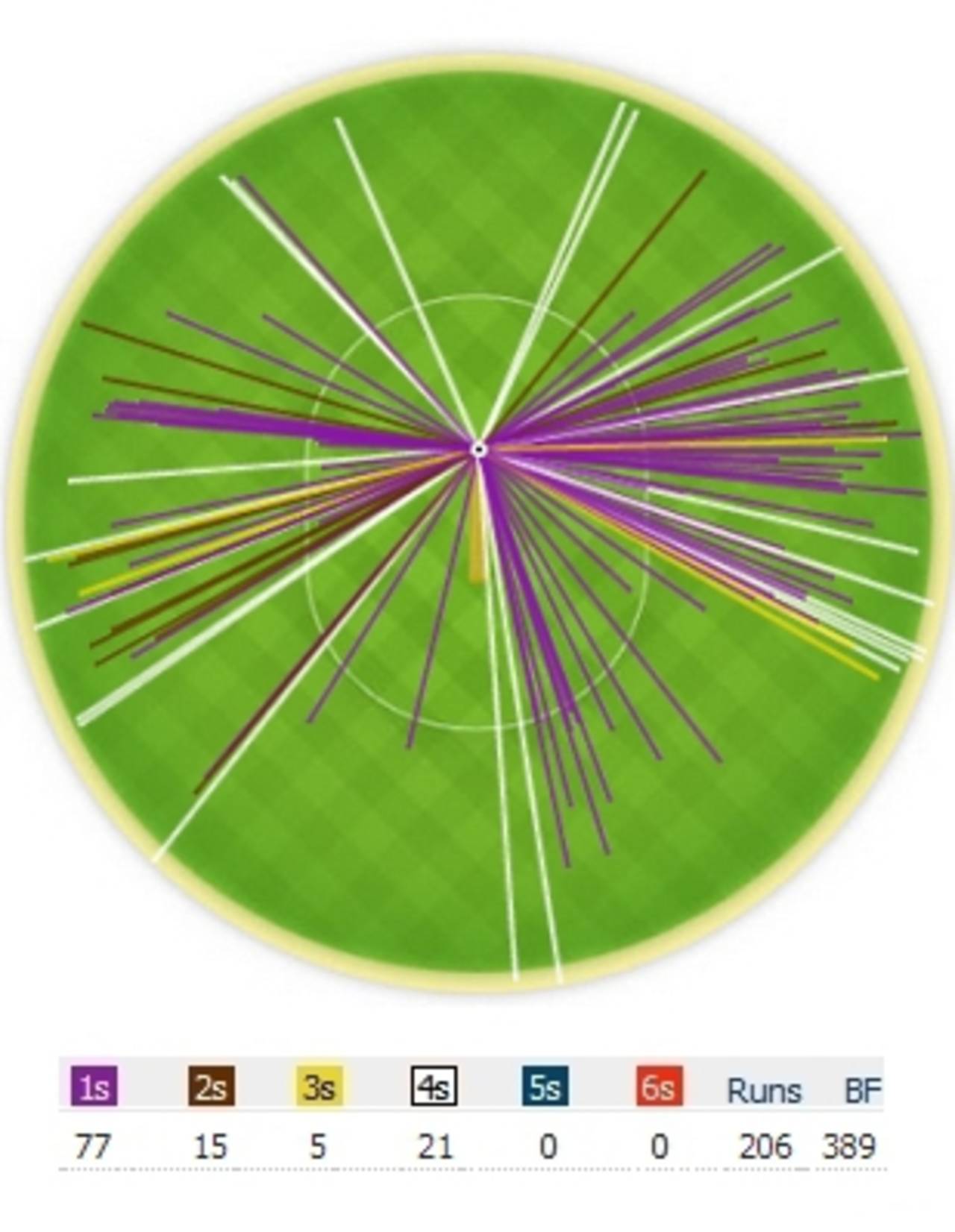It's a season of comparisons after the slots vacated by Rahul Dravid and VVS Laxman. With
Cheteshwar Pujara batting at No. 3, similarities are being looked for between him and Dravid. This is not to endorse any of that - he is yet to prove himself outside the subcontinent - but one look at Pujara's celebrations, and you know Laxman is the man he is more like. He has that calm on his face, that satisfaction, that look of a man who is between a hearty meal and an afternoon nap on a sunny winter Sunday. Like Laxman, when he reaches a milestone, it seems all is well with the world.
All this shouldn't need mentioning, but of late celebrations by Indian players make you wonder if they are actually making a living doing something that is supposed to bring them joy. All the other youngsters nowadays take a catch and throw the ball down in disgust. They take a wicket and are in the face of the batsman. They score a hundred and swear. You forget it's some sport you are watching.
The typical young Indian cricketer is perennially angry at something or the other. It just feels at times that he is fighting an unjust world that is wronging him. Media, fans, commentators, they are all their enemies. You can understand the pressure they play under, the scrutiny, and also perhaps the limited opportunities they get, but Pujara has not had it easy either.
Pujara scored tonnes of runs in domestic cricket but initially that brought him more ridicule than recognition. He comes from a region where runs are automatically devalued. Even Ravindra Jadeja has scored a triple-century
in Saurashtra, and another on a similar track
in Gujarat. It is a perception hard to shrug off. Primarily because of his Rajkot origin, Pujara saw other young batsmen - arguably less deserving - get chances and endorsements ahead of him.
When Pujara's chance finally did arrive, he scored a sparkling half-century when promoted to turn a tricky chase
into a cakewalk. Now that he had begun to reveal the quality behind the Rajkot runs, another setback awaited. During an IPL game, at the same venue that he made his debut, Bangalore, Pujara dived on one of the worst outfields in India and was out of commission with a knee injury.
Two knee operations later, Pujara found himself right at the back of the queue. This was also a period when his father went through a heart ailment. His mother had died when he was young, and now this religious family of two had only each other to lean on.
To come back from all that, Pujara went to the West Indies with the A team, and on tough pitches he scored Laxman-like runs when all others failed. If any other youngster had gone through all this, he would have reacted differently to how Pujara did after reaching his second century in three Tests on return, and also his first Test double.
And Pujara is only improving as a batsman with every Test. As Ravi Shastri observed, Pujara is perhaps the only young batsman in India who can attack spinners without going in the air. Throughout his effort in Ahmedabad, one that has all but batted England out of the Test, Pujara disheartened the bowlers. After an early chance that lobbed James Anderson at mid-on, he took no risk. Nor did he look anxious to reach a landmark or to prove a point.
Quietly and unobtrusively, he kept the good balls out and cashed in on the loose ones. Batting is simple, isn't it? Most impressive was his quick judgement of length against the best bowler on show, Graeme Swann, who had earlier outwitted a good player of spin, Gautam Gambhir, by bowling full with a flat trajectory. Gambhir kept going back as soon as he saw the ball wasn't tossed up, but kept discovering they were a bit too full to be playing off the back foot.
Pujara even outscored Virender Sehwag in a partnership of 90 without playing a shot in anger. He even had words of advice for Sachin Tendulkar when the latter just walked in. He also had the fitness to keep going on and on. Of the 16 first-class centuries he has scored, nine have crossed 150 to go with one 148 not out. It becomes even better in recent times: eight of his last 10 hundreds have been 150-plus.
He had to do a fair share of running too: only 41% of his runs came in boundaries. He wasn't flustered when R Ashwin inverted the laws of calling when running between the wickets. Most importantly, though, when he ran his 100th and 200th runs, he made sure he won't be embarrassed years later when he is watching the tapes with his grandchildren.
This is not to put down somebody like Virat Kohli, who is more expressive in his celebrations. It's their method, it's how they have played their cricket. Some players even find that that bit of needle and anger brings out their best. It's just that among an increasing crowd of players who sometimes make you doubt if they are enjoying their game as much as they should, it's good to see a non-angry young man.
Sidharth Monga is an assistant editor at ESPNcricinfo
